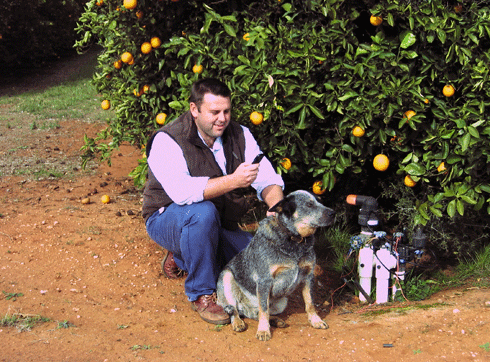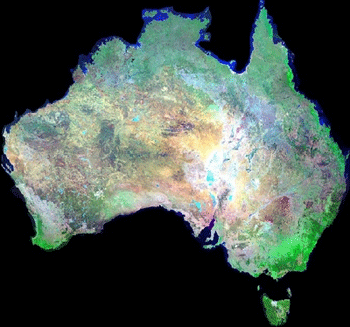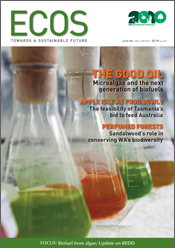
|
Published: 20 December 2010
New mail for irrigators
Checking the mobile for new messages is one of the first things many people do each day. Hundreds of Australian irrigators now have an added reason to check their phones, with vital information about their crops’ water requirements being provided as a daily text message.

|
|
Dr John Hornbuckle demonstrates the IrriSATSMS system. Credit: CSIRO
|
The need to use limited water supplies efficiently, and the low uptake of existing tools, prompted Dr John Hornbuckle and his colleagues at CSIRO Land and Water to combine two technologies that hadn’t been applied in the irrigation sector before: remote sensing and information delivery through SMS.
Known as IrriSATSMS, the system has been trialled for three seasons in the Murrumbidgee Irrigation Area. This season, it will help manage more than 100 gigalitres of water across eight irrigation regions in the Murray–Darling Basin.
The remote sensing is done via NASA’s Landsat satellite, with images updated every few days. The images are analysed using a normalised difference vegetation index – based on how green crops are, and their amount of biomass – to track crop growth in real time. The satellite data provides a picture of crop performance that can be gathered down to a scale of 30 × 30 m, and combined with data from on-ground weather station networks to determine crop water use. The combined information is then delivered to irrigators via SMS.
Irrigators use various methods to determine when to water their crops, such as a fixed schedule (eg irrigate every seven days), soil moisture probes, or simply testing the soil with a shovel. ‘IrriSAT tries to fill the gap: to get the 90–95% of people who aren’t using soil moisture probes on to a quantifiable technique,’ says Dr Hornbuckle.
The IrriSATSMS system is already being used by ~200 irrigators in the Murrumbidgee Irrigation Area, Colleambally and the Hawkesbury-Nepean areas west of Sydney; on cotton in the Gwydir, Namoi and Border river districts of Queensland; and by orchardists and grape growers in Victoria’s Goulburn-Murray and Sunraysia districts. Each morning, they receive a text message with site-specific information for each block, which tells them how much water their crop has used, and for how long they need to irrigate to refill the soil profile.
Murrumbidgee irrigator, Mr Rod Gribble, has been using IrriSAT for three seasons to monitor 20 ha of irrigated wine grapes. He regards it as just one of several monitoring tools, which he uses along with infield moisture monitoring, a soil meter probe and the ‘good old shovel.’ He says IrriSAT gives a good guide, and by putting it into the mix with several other methods, hopefully enables him to make better decisions.
Mr Gribble says it’s a matter of trying to be proactive.
‘The vines will tell you what is happening, but that’s all retrospective. It’s not much use going out there when all the tendrils are dried up and the grapes are laying over saying ‘I’m thirsty’ – it’s a bit late then.’
But, he says people shouldn’t get the idea you can run a vineyard remotely. ‘You still have to go out there, get your fingers dirty and see what’s happening’.
|
Landsat is the name given to a series of satellites used by governments, scientists and educators to monitor changes on the Earth's land surface. Landsat satellites provide scientists with a means of measuring changes in, for example, the amount of healthy vegetation, land use and land cover, the extent of damage and rate of regeneration following a forest fire, and various other applications of interest to professionals in the defence and agriculture industries, including irrigation as in its application in the Irrisat service. Since the launch of Landsat 1 in 1972, these satellites have continuously monitored the Earth. |
CSIRO is now working with a commercial partner, and hopes to commercialise the IrriSATSMS service over the next 12 months. Dr Hornbuckle says one of the benefits of the technology is its relatively low cost compared with some of the other services already on the market.
Around the world, other SMS messaging services have been developed for farmers, such as a pest warning system in the Philippines, and an information service on market prices in Cambodia. But, Dr Hornbuckle believes the combination of SMS with satellite information makes IrriSAT unique.




